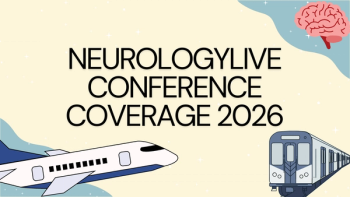Newly announced data from the phase 3 ATTeST study (NCT02770807) revealed that EryDex (Quince Therapeutics) did not meet its primary end point of change in the modified International Cooperative Ataxia Rating Scale (mICARS) among pediatric patients with ataxia telangiectasia (A-T) after 6 months of treatment. Despite failing to meet the primary end point, the company noted that studies will continue to assess EryDex in patients aged between 6 and 9 years, based on subgroup analysis results from this trial.1,2
Published in The Lancet Neurology, the modified intention-to-treat (mITT) population in this trial comprised of 164 participants (low-dose group, n = 56; high-dose group, n = 54; placebo group, n = 54). Investigators reported no differences identified in regard to change in mICARS score from baseline to 6 months in the low-dose group (least squares mean difference, -1.37; 95% CI, -2.932 to 0.190) or the high-dose group (-1.40; -2.957 to 0.152; P = .0765) compared with the placebo group.
“The main takeaway of the ATTeST study was the excellent safety profile of EryDex, which was well-tolerated with no serious safety concerns. Reported adverse events did not mimic those seen with standard corticosteroids and were very similar between treated patients and controls,” Dirk Thye, MD, chief executive officer and chief medical officer at Quince, told NeurologyLive®. “We are encouraged with observations of continued growth in height of pre-pubertal children who received EryDex for up to 2 years, and a few patients who received EryDex for more 10 years. Additionally, we observed no excessive weight gain, Cushingoid appearance, hyperglycemia, hypertension, hirsutism, or behavioral adverse effects – essentially all the adverse effects that make steroids a challenging agent to use in children or adults for longer periods of time."
This phase 3, multicenter, randomized, double-blind, placebo-controlled trial was conducted at 22 centers in 12 countries. Patients included in the study were aged 6 years or older who weighed more than 15 kg and met the clinical criteria for A-T but had preserved autonomous gait. Researchers randomly assigned participants 1:1:1 to EryDex with either a low-dose (approximately 5-10 mg), or high-dose (approximately 14-22 mg), or placebo, utilizing an independent interactive web response system, with minimization for sex and age (between 6 and 9 years versus at least 10 years). The treatment was administered intravenously once a month for 6 months.
READ MORE: Gene Therapy LX2006 Positively Impacts Cardiac Biomarkers of Friedreich Ataxia, Clinical Data Show
Top Clinical Takeaways
- The ATTeST phase 3 trial revealed that EryDex did not achieve the primary end point in treating pediatric patients with A-T based on the mICARS score.
- Despite the overall failure, subgroup analyses suggested potential benefits in younger children, prompting continued research in this age group.
- The safety profile of EryDex was generally acceptable, with no significant adverse events leading to discontinuation of the trial.
In the trial, the primary efficacy end point was change in the mICARS from baseline to month 6, assessed in the mITT population, which included all randomly assigned participants who received at least 1 dose of study drug and had at least 1 post-baseline efficacy assessment. Between March 2, 2017, and May 13, 2021, 239 pediatric patients were assessed for eligibility of the study and only 176 were randomly assigned to the treatment. Authors noted that 1 patient assigned to high-dose EryDex did not initiate treatment. Overall, 175 patients received at least 1 dose of EryDex (low dose, n = 59; high dose, n = 57; placebo, n = 59).
“The publication of the ATTeST trial results in The Lancet Neurology highlights promising clinical data that demonstrate progress being made toward a potential treatment option for patients with A-T, a rare pediatric disorder characterized by progressive neurological decline, impaired motor control, speech difficulties, and a life expectancy typically in the twenties or thirties,” William Whitehouse, MD, honorary clinical associate professor at the University of Nottingham School of Medicine, said in a statement.2
In terms of safety, investigators reported adverse events observed in 43 (73%) out of 59 patients in the low-dose group, 47 (82%) out of 57 patients in the high-dose group, and 43 (73%) out of the 59 patients in the placebo group. Serious adverse events were reported in 6 patients in the low-dose group (10%), 7 patients in the high-dose group (12%), and 7 patients in the placebo group (12%). Researchers noted that there were no patients who experienced hyperglycaemia, hypertension, hirsutism, or Cushingoid appearance in any of the treatment groups, nor any treatment-related deaths.
“Natural history studies have shown that children between age six and 10 with classic A-T experience rapid clinical decline, after neurological symptoms worsen and patients with A-T frequently become wheelchair-bound by adolescence. The differential response in mICARS score by age seen in subgroup analyses from the ATTeST study emphasizes the need to stratify future A-T clinical trials by age,” Whitehouse, who also serves as a consultant pediatric neurologist at Nottingham Children’s Hospital, Nottingham University Hospitals NHS Trust, said in a statement.2
REFERENCES
1. Zielen S, Crawford T, Benatti L, et al. Safety and efficacy of intra-erythrocyte dexamethasone sodium phosphate in children with ataxia telangiectasia (ATTeST): a multicentre, randomised, double-blind, placebo-controlled phase 3 trial. Lancet Neurol. 2024;23(9):871-882. doi:10.1016/S1474-4422(24)00220-5
2. Quince Therapeutics Announces The Lancet Neurology Publication of Phase 3 ATTeST Clinical Trial Data Evaluating EryDex for the Treatment of Ataxia-Telangiectasia (A-T). News Release. Quince Therapeutics. August 15, 2024. Accessed August 26, 2024. https://ir.quincetx.com/news-releases/news-release-details/quince-therapeutics-announces-lancet-neurology-publication-phase





























